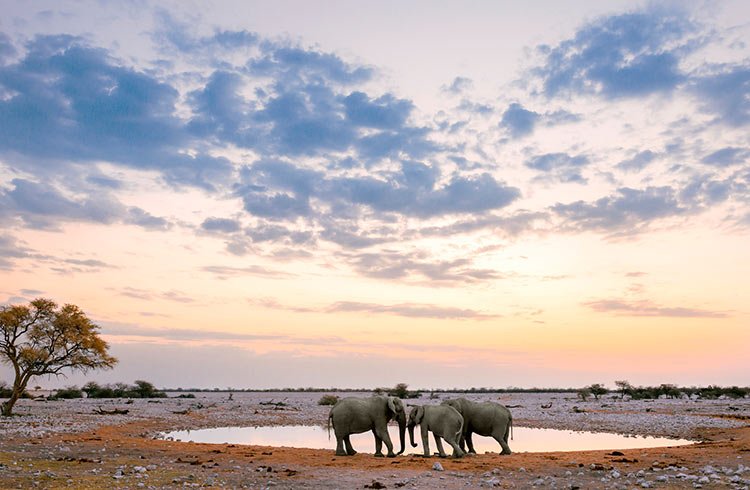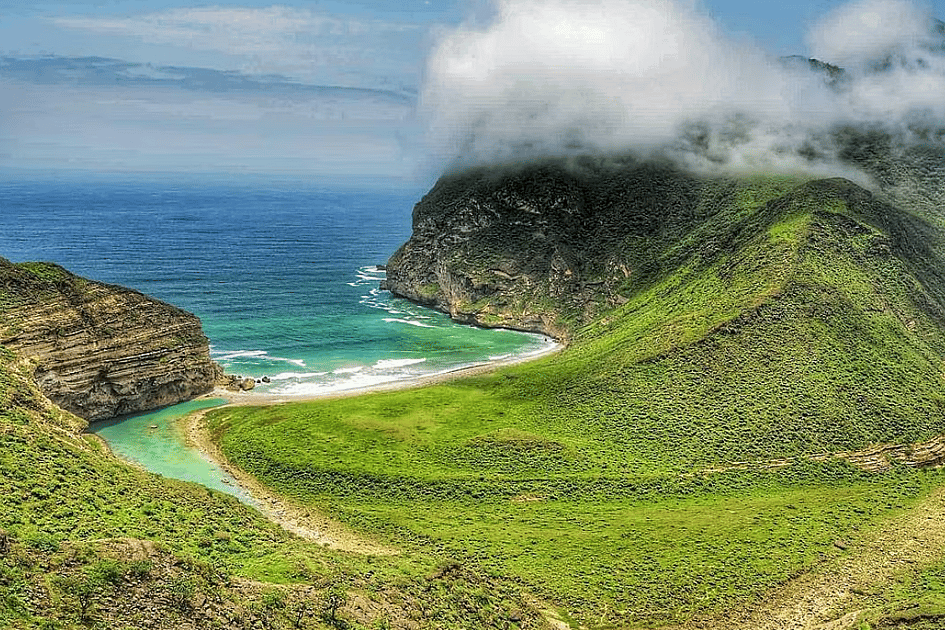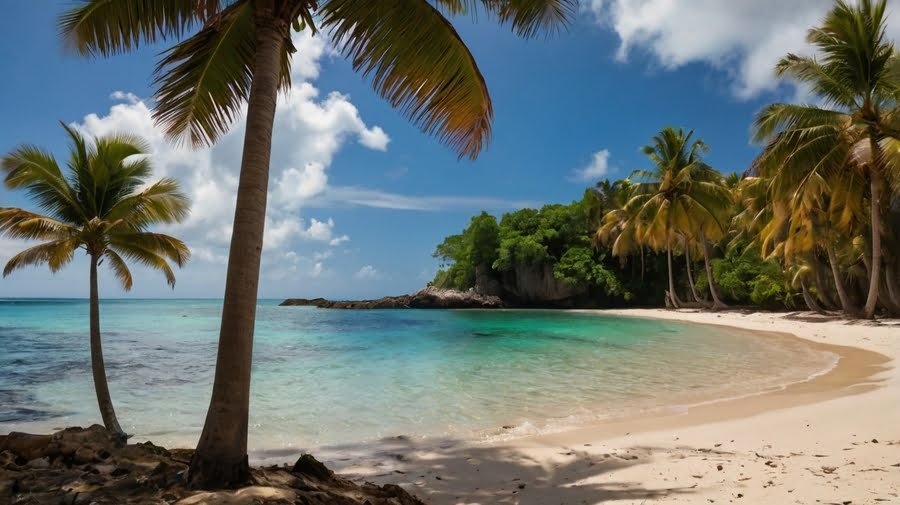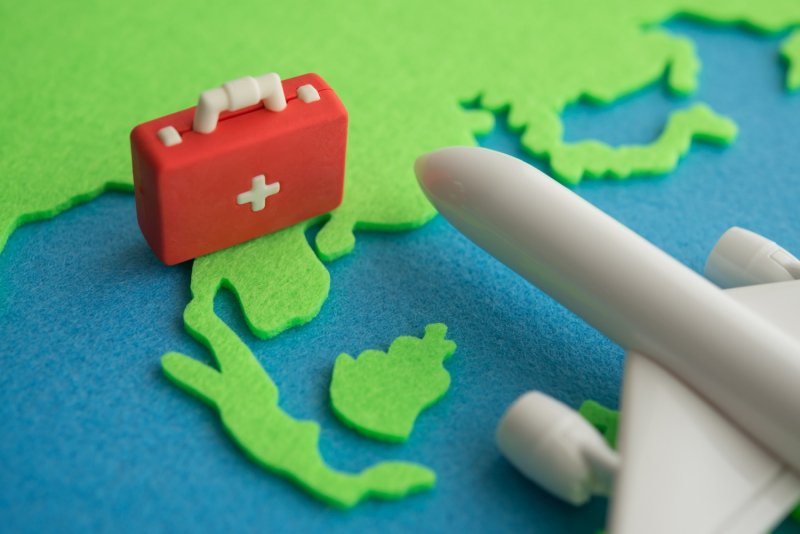Tips & Advices
Is Namibia Safe For Travelers? 9 Tips to Avoid Trouble

How to avoid crime, stay healthy, safe and navigate Namibia’s insane roads safely. Don’t go to Namibia without reading these tips.
Photo © Getty Images/Westend61
1. Crime in Namibia
Crime is a serious concern in Windhoek and other areas throughout Namibia. Robberies, muggings, and thefts occur frequently, especially in downtown shopping areas and wherever crowds of travelers are found.
Incidents are less frequent during the day than they are after dark. Victims of crime who do not resist the crime and surrender their belongings usually get away from these encounters unharmed. Criminals sometimes display knives and occasionally firearms. The Namibian Police established a Tourist Protection Unit, but they are severely understaffed, so the prevention of crime is not yet at it’s predicted full potential.
The most common types of crime in Namibia are non-violent, such as pick-pocketing, purse-snatching and vehicle theft. Common sense rules apply: don’t leave valuables in parked cars, keep your bags safe and out of sight, and be alert and aware of anyone following you at all times.
2. Dangerous roads in Namibia
Driving can be very dangerous in Namibia. Unfortunately, traffic fatalities among travelers are common.
Although major roads are well maintained, Namibia’s network of secondary roads can be hazardous, particularly during the rainy season (November to April).
If you have hired a car to drive in Namibia, be extra careful. Driving at night outside urban areas is dangerous, as unlit roads make it difficult to see, and there are animals frequently crossing roads. If you are driving outside Windhoek, try to arrive at your destination before it becomes dark in the evening.
Always pack plenty of water, food, and emergency medical supplies just in case you break down.
If you are driving in urban areas, be aware that taxis often stop abruptly to pick up and drop off passengers, which causes many collisions on Namibia’s roads.
Namibian police checkpoints are positioned outside major cities and towns on all major highways. During the holiday season, additional checkpoints can be established along the Windhoek–Swakopmund highway and near medium-sized towns. Drivers should be prepared to show vehicle registration documents, identification (passport, Namibian identification cards), rental car paperwork, and/or driver’s licenses on request. Police have fired warning shots at vehicles that ignore roadblocks, so you should always stop and wait to be waved through.
3. Civil unrest and political violence in Namibia
The risk of political violence is low in Namibia. Street demonstrations are rare and, are usually not violent if they do occur. Organizers of labor union-led demonstrations generally enforce discipline among their people, and do their best to avoid confrontation with authorities.
Namibia has been independent from South Africa since March 1990. There has been little political violence in Namibia, due to its stable democratic government. If you are traveling during election times (November 27 in 2019), stay up to date with local news reports to make sure there is no outbreak of civil unrest.
4. Terrorism in Namibia
Namibia is rated low for terrorism. There are no known organized criminal groups operating in Namibia. In 2009, the Prevention of Organized Crime Act and the Financial Intelligence Act entered into force, which are laws aimed at the suppression of organized crime, money laundering, and terrorist financing in Namibia.
5. Environmental hazards
Namibia is a dry, semi-desert country. It can experience extreme temperatures, especially during summer (November to April) and flooding can occur during the rainy season (December to March) in the central and northern regions. Dry river beds occasionally flood, making gravel roads impossible to pass. Drivers should always look out for warning signs, and never ever try to make a crossing where water is flowing.
6. Will I get kidnapped in Namibia?
Very few incidents of kidnapping have been reported in Namibia. However, the reported kidnapping incidents were not politically motivated but related to domestic disagreements. No major incidents of kidnapping against travelers have been reported. The overall threat of kidnapping risk in Namibia is low.
7. Drugs in Namibia
Most of the drugs that are found in Namibia have been illegally smuggled into the country, as Namibia is being used as a transit route for drugs destined for countries throughout southern Africa.
Marijuana is relatively cheap, however, it is illegal and travelers should be aware drug laws are strictly enforced in Namibia.
8. Police in Namibia
Under Namibian law, any law enforcement officer must show their credentials and identify themselves before carrying out an arrest.
The Namibian police department opened a Tourist Protection Unit (TPU) to assist visitors who have been subjected to crime. As a pilot project, TPUs were established first in the Khomas and Erongo regions. The Tourist Protection Unit in Windhoek is located at the corner of Independence Avenue and Bahnhof Street.
Namibian Police: 10 111
9. Medical facilities and emergencies in Namibia
Windhoek has a number of adequate medical facilities, and there are a number of medical evacuation companies around.
- Tap water is generally safe to drink throughout Namibia, however, if you want to be on the safe side, boil your water or use purification tablets
- Malaria prevention methods are recommended for travelers visiting rural areas in northern/eastern Namibia, or anywhere north of Otjiwarongo
- Meningitis immunizations and an adult booster for Polio are also recommended
- Check with your travel doctor to be sure you’re up to date with routine vaccinations
- Visitors to Namibia should be aware that HIV/AIDS is common, and sexually active travelers should use protection.
Tips & Advices
Khareef season: Omani authorities issue safety tips for travelling to Dhofar after crash

In the midst of Salalah’s Khareef season, many UAE residents drive to Oman to experience the lush green landscape as the monsoon rain touches the land.
While the rains bring cooler temperatures and helps create unforgettable moments, it can also bring about safety hazards, particularly near water bodies. Stressing the need to exercise caution, Omani police shared safety tips for those travelling to Dhofar:
Stay up to date with the latest news. Follow KT on WhatsApp Channels.
-
Do not park your vehicle in unsafe places, such as near slopes. This puts your life and the lives of others at risk. Be responsible and stay away from dangerous locations.
-
Never leave children unattended near ponds and bodies of water, as even a moment of inattention can cost you
-
Keep the vehicles clean, and avoid dirty cars. Do not obscure the plate number, as owners can be held legally accountable for this
-
Passengers must not lean out of the window or roof of the car while driving recklessly; this can also expose you to legal accountability.
In a tragic accident in early July, a multi-vehicle collision in Dhofar killed 5 people, including two Omanis and three Emiratis who were from the same family. The crash injured eleven others, including two Omanis and nine Emirati citizens of which five are children.
The Emirati family members who died in the crash are a couple, and the wife’s mother. The couple’s eight-month-old daughter was hospitalised in Oman.
The family had travelled to Salalah for a summer break, but the tragic accident occurred just 12 hours after they left the UAE.
After the collision, UAE travellers spoke to Khaleej Times, sharing precautions to take while planning the journey, such as ensuring the vehicle is in good condition.
They also shared safety advice for driving through the tricky terrain, such as checking fuel levels, and driving at a speed lower than the speed limit in some areas.
Tips & Advices
US Issues Urgent Level 2 Travel Advisory for Dominican Republic Highlighting Crime Risks and Essential Safety Tips for Travelers

Sunday, July 20, 2025
The U.S. Department of State has recently updated its travel advisory for the Dominican Republic, now categorized as a Level 2 destination, advising American travelers to “exercise increased caution” due to the persistent threat of crime. This update follows concerns about violent crime, including robbery, homicide, and sexual assault, in popular tourist areas. However, while some critics have dismissed the warnings, the Dominican Republic continues to attract millions of international visitors each year. Here’s an overview of what travelers should know about the advisory, safety tips, and why this Caribbean gem remains a top vacation destination.
U.S. Travel Advisory Update for the Dominican Republic
On June 12, 2025, the U.S. Department of State elevated its advisory for the Dominican Republic to Level 2, urging travelers to “exercise increased caution.” This warning highlights the risk of violent crime despite the heightened police presence in areas frequently visited by tourists. The advisory pointed out that both locals and tourists may be vulnerable to robbery, sexual assault, and homicide, with criminals often escaping prosecution. However, the Level 2 advisory is considered a moderate alert, advising travelers to be aware of increased risks, but not urging a halt to travel entirely.
Level 2 advisories are a common designation for many tourist destinations around the world, and the Dominican Republic shares this rating with other popular travel spots such as Panama, the Netherlands, and the Philippines.
The Canadian government has also issued a similar advisory, cautioning travelers to “exercise a high degree of caution” due to concerns about violent and petty crime, including fraud, poor road conditions, and issues with public transportation. Despite these risks, the country remains a top destination for North American tourists.
How to Stay Safe in the Dominican Republic
While the U.S. travel advisory highlights the risks present in the Dominican Republic, travelers can take several precautionary steps to ensure a safe and enjoyable trip. The U.S. Department of State has provided key safety recommendations, including:
- Stay Vigilant: Always be aware of your surroundings, especially in crowded or unfamiliar areas.
- Avoid Flashy Displays: Keep valuables like phones, jewelry, and expensive items out of sight.
- Travel in Groups: If possible, explore with others rather than traveling alone, especially in unfamiliar areas.
- Secure Your Belongings: Never leave your food, drinks, or personal items unattended, and always be cautious in public spaces.
- Use Trusted Transportation: Experts recommend using reputable taxi services or ride-sharing apps like Uber instead of unregistered motorcycle taxis (motoconchos).
For emergencies, the Dominican Republic provides reliable services including the 911 emergency response system and a tourist police force (POLITUR), ensuring that help is available when needed. Many resorts also offer private security personnel, and it is strongly advised to stay within the safety of the resort boundaries, particularly for first-time visitors.
Cultural Awareness and Preparation
To ensure smooth travel experiences, it is recommended that visitors familiarize themselves with the local culture, norms, and language. Knowing basic Spanish phrases and understanding the country’s political sensitivities—such as its complex relationship with neighboring Haiti—can enhance both safety and comfort during a stay. Additionally, being respectful of local customs and traditions can help avoid misunderstandings and ensure a more enriching trip.
Why the Dominican Republic Remains the Caribbean’s Top Destination
Despite the recent advisory update, the Dominican Republic continues to be the Caribbean’s most visited country. In 2024, the island saw 34.2 million international arrivals, marking a 6.1% increase from the previous year. American tourists represent a significant portion of this traffic, accounting for nearly half of the arrivals during the first half of 2024.
However, there has been a slight decline in North American visitors in 2025, with a 5.12% drop in American arrivals and a 4.43% decrease in Canadian travelers compared to the same period in 2024. The Ministry of Tourism attributes these declines to seasonal factors such as the leap year and changes in holiday scheduling. On a positive note, South American tourism has surged, with a 31.3% growth in arrivals from that region during the first quarter of 2025.
The Dominican Republic remains a beloved destination thanks to its white-sand beaches, vibrant culture, warm climate, and relatively low-cost travel options. The country’s straightforward entry requirements, including minimal visa processes for most travelers, also contribute to its popularity.
Conclusion
While the U.S. Level 2 advisory highlights valid safety concerns, the Dominican Republic continues to be a top choice for millions of travelers. With proper precautions, visitors can still experience the beauty and charm of this Caribbean paradise. The country’s world-class resorts and tourist destinations are well-equipped to ensure safety, making it a top contender for those seeking a tropical getaway.
Whether you’re attracted to the pristine beaches, the rich cultural heritage, or the affordable vacation options, the Dominican Republic remains a dream destination for travelers worldwide. By staying informed and following safety tips, tourists can continue to enjoy all the beauty the island has to offer while minimizing risks.
Tips & Advices
You really should get health insurance when travelling abroad – BusinessDesk | NZ
-

 Mergers & Acquisitions1 week ago
Mergers & Acquisitions1 week agoAmazon weighs further investment in Anthropic to deepen AI alliance
-

 Mergers & Acquisitions1 week ago
Mergers & Acquisitions1 week agoHow Elon Musk’s rogue Grok chatbot became a cautionary AI tale
-

 Asia Travel Pulse2 weeks ago
Asia Travel Pulse2 weeks agoLooking For Adventure In Asia? Here Are 7 Epic Destinations You Need To Experience At Least Once – Zee News
-

 Brand Stories2 weeks ago
Brand Stories2 weeks agoVoice AI Startup ElevenLabs Plans to Add Hubs Around the World
-

 Mergers & Acquisitions1 week ago
Mergers & Acquisitions1 week agoUK crime agency arrests 4 people over cyber attacks on retailers
-

 AI in Travel2 weeks ago
AI in Travel2 weeks ago‘Will AI take my job?’ A trip to a Beijing fortune-telling bar to see what lies ahead | China
-

 Mergers & Acquisitions1 week ago
Mergers & Acquisitions1 week agoEU pushes ahead with AI code of practice
-

 Mergers & Acquisitions2 weeks ago
Mergers & Acquisitions2 weeks agoChatGPT — the last of the great romantics
-

 The Travel Revolution of Our Era1 month ago
The Travel Revolution of Our Era1 month agoCheQin.ai Redefines Hotel Booking with Zero-Commission Model
-

 Mergers & Acquisitions1 week ago
Mergers & Acquisitions1 week agoHumans must remain at the heart of the AI story

